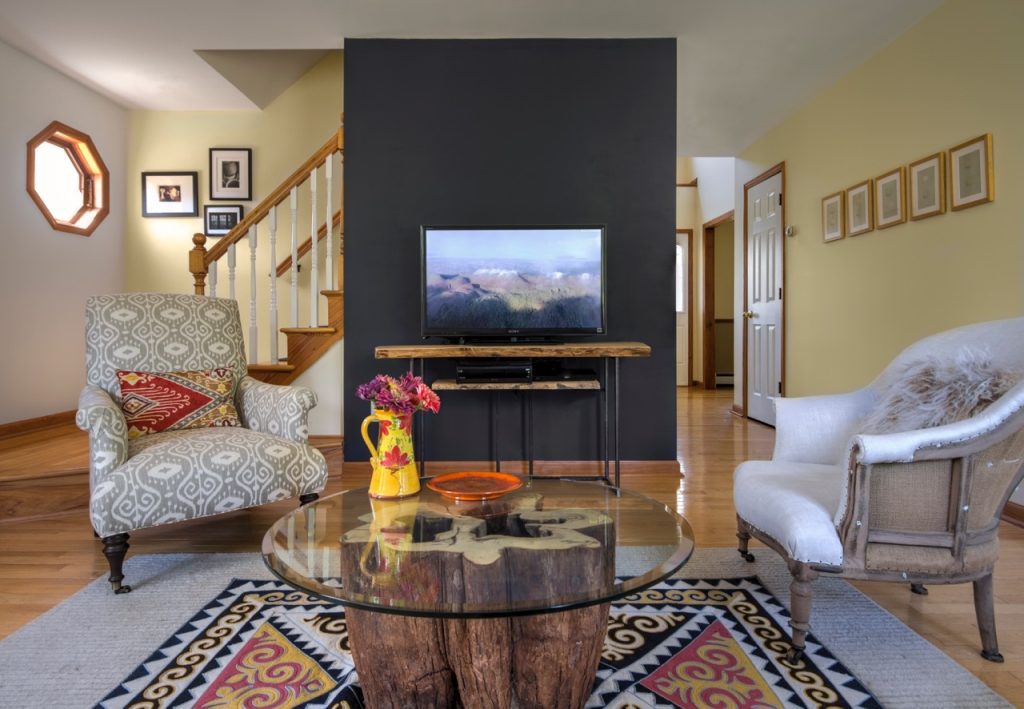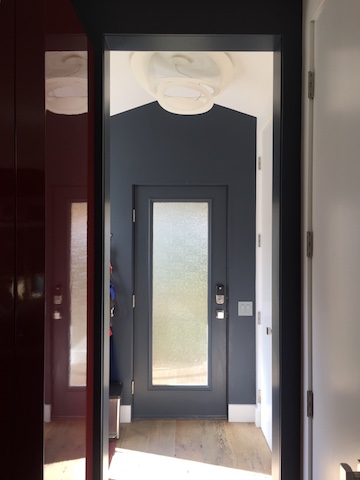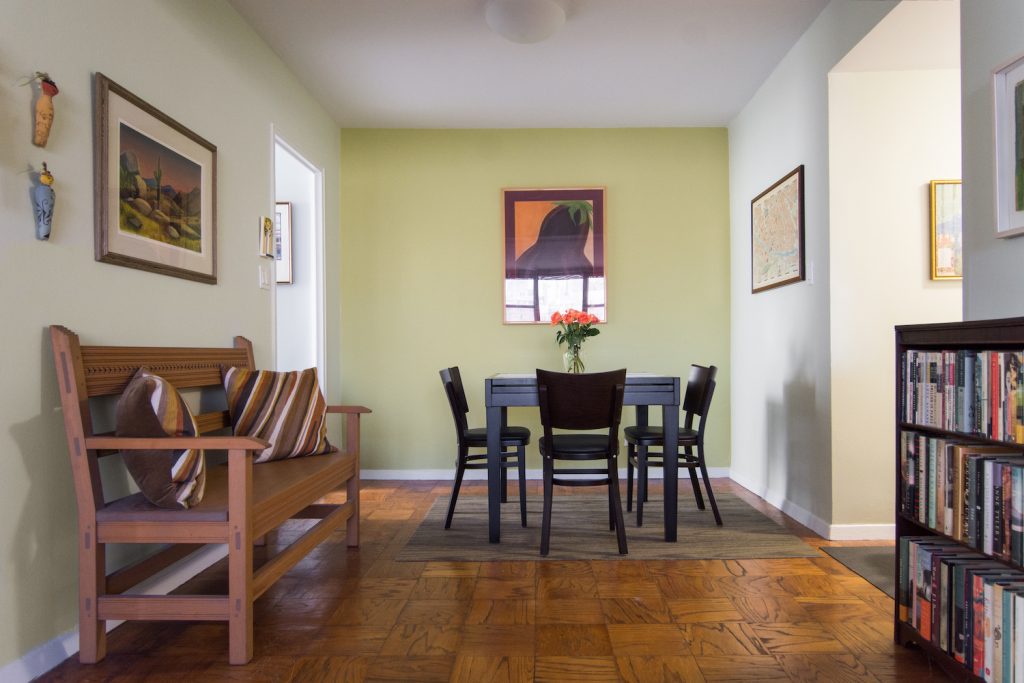
Accent wall Amy Krane Color
Updated Feb 2022
While painting all four walls of a room creates cohesion and unity sometimes we want to kick it up a notch with a painted accent wall. Hopefully you adore the color chosen for the room but if your heart is set on something more – an accent wall can help. It adds the wow factor. In the photo above, not only does the navy blue accent wall add a note of fun and whimsy, it helps integrate one of the key colors used throughout the room and has the added bonus of “hiding” the TV in plain site. Take it from a color consultant – that’s a neat trick when landing on a dark accent wall color.
What makes a great accent wall?
The most important tip I can give as paint color consultant is this. The two main components of a successful accent wall are location and color choice.
When it’s most appropriate to create one.
The most successful accent wall is one which is already the focal point of the room either by virtue of its architecture or function. You are merely reinforcing that fact by adding the different color to highlight it. It shouldn’t be arbitrarily chosen. The types of walls which work well are those that are unique in the room like the freestanding wall above. It might have a fireplace on it, be gabled or cathedral shaped. An accent wall may hold a major piece of art work or is the headboard wall in bedroom.

Entryway Accent Wall Amy Krane Color
In the photo below the bright yellow wall holds the fireplace and is also the focus of the room due to its “A”shape. It’s the natural place to use an accent color.

Yellow A- Frame Accent wall Amy Krane Color
Choosing color for it
There are so many different color directions you can choose to go. It’s hard to go wrong with a darker or brighter version of the color you are using on your other walls. It won’t create a room that’s too busy. Going lighter or more muted, on the other hand, will not maintain that wall as the room’s main focus so it’s not the best choice.

Accent wall is the same color as the others but darker and brighter Amy Krane Color
Black is a major trend in interior and exterior residential design these days and black makes a great color for a wall. An entirely black room can be overpowering for most people but it’s very dynamic as an accent in an otherwise light colored room. Here the headboard wall is painted Benjamin Moore Toucan Black and is the focus of the room.

Black accent wall Amy Krane Color
When the accent wall is just a few shades darker than the wall color it changes the overall effect. It creates a more soothing atmosphere as there is less contrast with the soft blend of colors.

Soft blend accent wall Amy Krane Color
Having the accent wall color come from a completely different hue family (color) than the rest of the room is trickier to pull off. The first room above has accomplished this to great affect. In these scenarios it is most successful when the two colors are very different in terms of value (lightness/darkness) or saturation ( purity of color). In the room above, the yellow walls are much lighter than the navy blue. If they were both equally light, like pastels, it would be much less successful.
Accent walls which serve a function
In spaces like hospitals and offices they are very common. In a waiting room they offer stimulation to keep a waiting patient visually occupied. In a hospital they do the same and also aid in “way finding” by accentuating areas of different function with different colors.

Hospital accent walls help with way finding
In homes, accent walls are more about decorating than about functionality. There are many options besides paint to create one. Millwork like paneling or shiplap and wallpaper come to mind. But all in all, a painted accent wall is an inexpensive way to create a design element in a room which adds to its uniqueness and beauty.


Nicely done! Love visual reinforcements! Thanks.
My pleasure. It’s all much easier to “get” when you’re looking at visual examples. Thanks for stopping by.